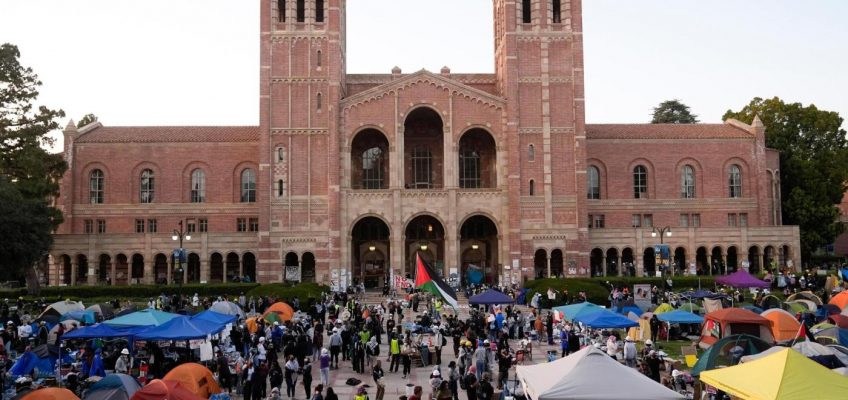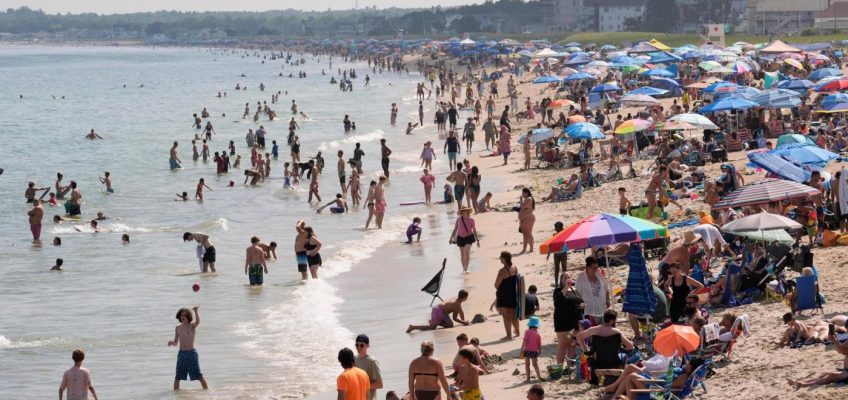By JULIE WATSON, Associated Press
The University of California, Los Angeles, reached a $6 million settlement with three Jewish students and a Jewish professor whose suit against the university argued it violated their civil rights by allowing pro-Palestinian protesters in 2024 to block their access to classes and other areas on campus.
The settlement comes nearly a year after a preliminary injunction was issued, marking the first time a U.S. judge had ruled against a university over their handling of on-campus demonstrations against Israel’s war in Gaza.
UCLA had argued that it had no legal responsibility over the issue because protesters, not the university, blocked Jewish students’ access to areas. The university also worked with law enforcement to thwart attempts to set up new protest camps.
But U.S. District Judge Mark Scarsi disagreed and ordered UCLA to create a plan to protect Jewish students on campus. The University of California, one of the nation’s largest public university systems, has since created system-wide campus guidelines on protests.
How the university handled dispersing the encampment in the spring drew widespread criticism. One night, counterprotesters attacked the pro-Palestinian encampment, throwing traffic cones and firing pepper spray, with fighting that continued for hours, injuring more than a dozen people, before police stepped in. The next day, after hundreds defied orders to leave, more than 200 people were arrested.
Related Articles
Los Angeles County seeks ordinance preventing law enforcement from concealing their identities
Sean ‘Diddy’ Combs asks for release on a $50 million bond ahead of sentencing in October
Starbucks looks to protein drinks and other new products to turn around lagging US sales next year
NYC shooter was a high school football player in Southern California
Everything we know about the victims of the New York City shooting
Trump administration joins lawsuit filed by Jewish students
In March, the Trump administration joined the lawsuit filed by the Jewish students and Jewish professor as it opened new investigations into allegations of antisemitism at Columbia University; the University of California, Berkeley; the University of Minnesota; Northwestern University and Portland State University.
Last week, Columbia agreed to pay $200 million as part of a settlement to resolve investigations into alleged violations of federal antidiscrimination laws and restore more than $400 million in research grants.
The Trump administration plans to use its deal with Columbia as a template for other universities, with financial penalties that are now seen as an expectation for future agreements.
Government finds UCLA violated civil rights of Jewish students
On Tuesday, the Trump administration announced the U.S. Department of Justice’s Civil Rights Division found UCLA violated the Equal Protection Clause of the Fourteenth Amendment and Title VI of the Civil Rights Act of 1964, “by acting with deliberate indifference in creating a hostile educational environment for Jewish and Israeli students.”
“UCLA failed to take timely and appropriate action in response to credible claims of harm and hostility on its campus,” said Assistant Attorney General Harmeet K. Dhillon of the Justice Department’s Civil Rights Division.
The university has said that it’s committed to campus safety and will continue to implement recommendations. The university did not immediately respond to a request for comment on the settlement or the DOJ announcement Tuesday.
UCLA agrees to granting students equal access
As part of the settlement agreement, UCLA must ensure Jewish students, faculty and staff are not excluded from anything on-campus.
The $6.13 million settlement will pay the plaintiffs’ damages and legal fees and go toward eight Jewish organizations.
Pro-Palestinian protesters also sue university
A group of 35 pro-Palestinian students, faculty members, legal observers, journalists and activists also has filed a lawsuit against UCLA, alleging the university failed to protect those who participated in the demonstrations.
During the 2014 protests, at least 15 pro-Palestinian protesters were injured and the tepid response by authorities drew criticism from political leaders as well as Muslim students and advocacy groups.




